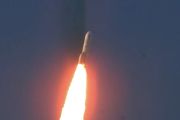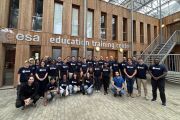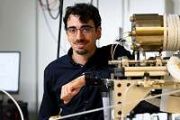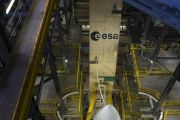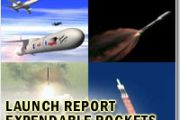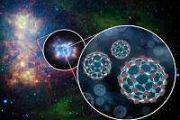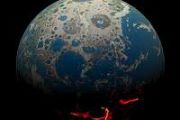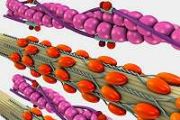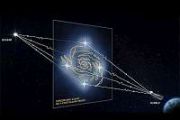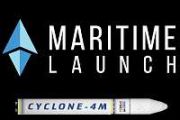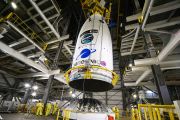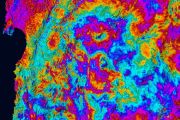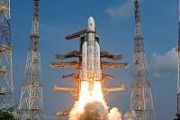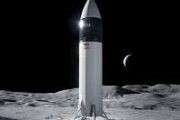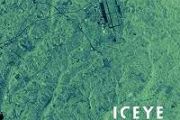
Copernical Team
Ingenuity Mars Helicopter spots Perseverance from above
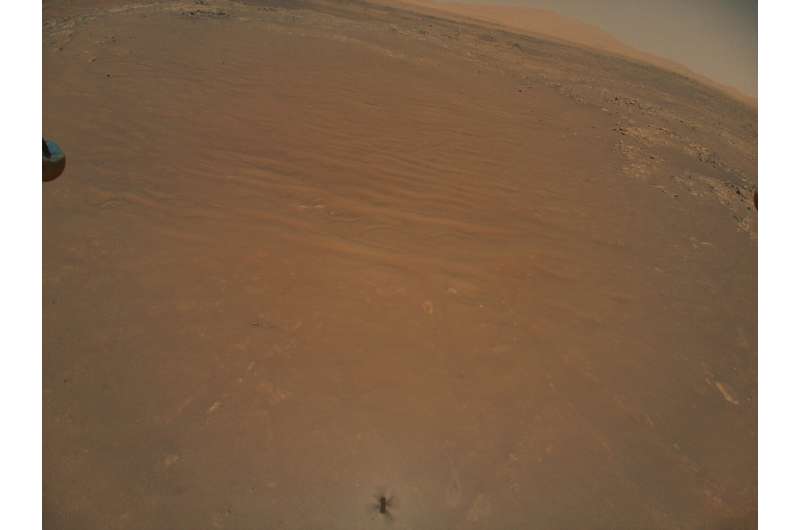
Can you see NASA's newest rover in this picture from Jezero Crater?
NASA's Ingenuity Mars Helicopter recently completed its 11th flight at the Red Planet, snapping multiple photographs during its trip. Along with capturing the boulders, sand dunes, and rocky outcrops prevalent in the "South Séítah" region of Jezero Crater, a few of the images capture NASA's Perseverance rover amid its first science campaign.
Ingenuity began as a technological demonstration to prove that powered, controlled flight on Mars is possible. It is now an operations demonstration intended to investigate how a rotorcraft can add an aerial dimension to missions like Perseverance, scouting possible areas of scientific interest and offering detailed views of nearby areas too hazardous for the rover to explore.
Only slight chance of asteroid Bennu hitting Earth: NASA
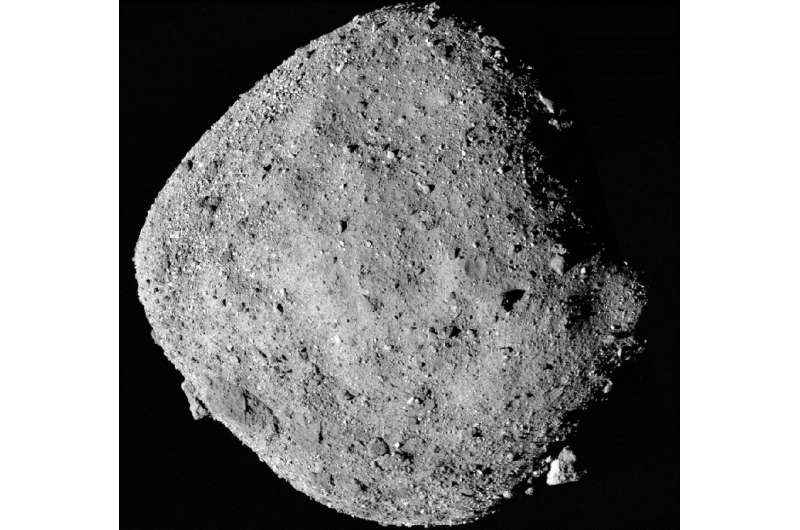
An asteroid known as Bennu will pass within half the distance of the Earth to the Moon in the year 2135 but the probability of an impact with our planet in the coming centuries is very slight, scientists said Wednesday.
OSIRIS-REx, a NASA spacecraft, spent two years near Bennu, an asteroid that is about 1,650 feet (500 meters) wide, observing its size, shape, mass and composition and monitoring its orbital trajectory around the sun.
Using its robotic arm, the spacecraft also collected a sample from the surface of the asteroid that will help researchers determine the future trajectory of Bennu.
The rocks and dust collected by OSIRIS-REx are scheduled to return to Earth on September 24, 2023.
Bennu was discovered in 1999 and is classified as a potentially hazardous asteroid.
It will make a close approach with Earth in September 2135.
Scientists want to figure out how Earth's gravity and a phenomenon known as the Yarkovsky effect will affect its future trajectory and the potential for an impact on a subsequent orbit.
NASA Spacecraft Provides Insight into Asteroid Bennu’s Future Orbit
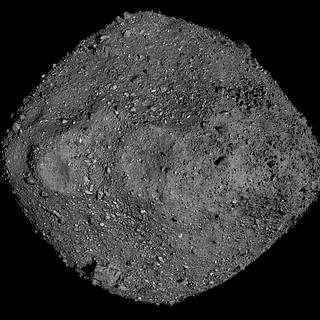 NASA researchers used precision-tracking data from the agency’s OSIRIS-REx spacecraft to better understand movements of the potentially hazardous asteroid Bennu, significantly reducing uncertainties related to its future orbit, and improving scientists’ ability to determine the total impact probability and predict orbits of other asteroids.
NASA researchers used precision-tracking data from the agency’s OSIRIS-REx spacecraft to better understand movements of the potentially hazardous asteroid Bennu, significantly reducing uncertainties related to its future orbit, and improving scientists’ ability to determine the total impact probability and predict orbits of other asteroids. Keeping an eye on ocean plastic pollution…from space!
 Video:
00:03:21
Video:
00:03:21
Meet bag, bottle and straw, three bits of plastic left on the beach.
They are only small, but they are heading into the ocean, where they could cause big damage. ESA is exploring how satellites can help detect and reduce plastic pollution in the ocean. From spotting build-ups of marine litter to tracking ocean currents, satellites could be game-changing in tackling this enormous environmental problem.
Though engaging for children and adults alike, this video is designed with primary school students in mind. In particular, teachers can use it to introduce the topic of marine litter in subjects such as
NSF awards funding for next-generation VLA antenna development
 The National Science Foundation (NSF) has awarded the National Radio Astronomy Observatory (NRAO) $23 million for design and development work on the Next Generation Very Large Array (ngVLA), including producing a prototype antenna. The ngVLA, a powerful radio telescope with 263 dish antennas distributed across North America, is proposed as one of the next generation of cutting-edge astronomical
The National Science Foundation (NSF) has awarded the National Radio Astronomy Observatory (NRAO) $23 million for design and development work on the Next Generation Very Large Array (ngVLA), including producing a prototype antenna. The ngVLA, a powerful radio telescope with 263 dish antennas distributed across North America, is proposed as one of the next generation of cutting-edge astronomical X-59 Resembles Actual Aircraft
 A heavy chorus of bolting and machinery filled the X-59 Quiet SuperSonic Technology, or QueSST, assembly building as engineers, system technicians, and aircraft fabricators worked to merge the major aircraft sections together, making it look like an actual aircraft for the first time since the initial cut of metal in 2018.
"We've now transitioned from being a bunch of separate parts sittin
A heavy chorus of bolting and machinery filled the X-59 Quiet SuperSonic Technology, or QueSST, assembly building as engineers, system technicians, and aircraft fabricators worked to merge the major aircraft sections together, making it look like an actual aircraft for the first time since the initial cut of metal in 2018.
"We've now transitioned from being a bunch of separate parts sittin Did nature or nurture shape the Milky Way's most common planets
 A Carnegie-led survey of exoplanet candidates identified by NASA's Transiting Exoplanets Satellite Survey (TESS) is laying the groundwork to help astronomers understand how the Milky Way's most common planets formed and evolved, and determine why our Solar System's pattern of planetary orbits and sizes is so unusual.
Carnegie's Johanna Teske, Tsinghua University's Sharon Wang (formerly of
A Carnegie-led survey of exoplanet candidates identified by NASA's Transiting Exoplanets Satellite Survey (TESS) is laying the groundwork to help astronomers understand how the Milky Way's most common planets formed and evolved, and determine why our Solar System's pattern of planetary orbits and sizes is so unusual.
Carnegie's Johanna Teske, Tsinghua University's Sharon Wang (formerly of Using particle accelerators to investigate the quark-gluon plasma of early universe
 In the early stages of the Universe, quarks and gluons were quickly confined to protons and neutrons which went on to form atoms. With particle accelerators reaching increasingly higher energy levels the opportunity to study this fleeting primordial state of matter has finally arrived.
Quark-Gluon Plasma (QGP) is a state of matter which existed only for the briefest of times at the very be
In the early stages of the Universe, quarks and gluons were quickly confined to protons and neutrons which went on to form atoms. With particle accelerators reaching increasingly higher energy levels the opportunity to study this fleeting primordial state of matter has finally arrived.
Quark-Gluon Plasma (QGP) is a state of matter which existed only for the briefest of times at the very be NASA, international panel provide a new window on rising seas
 NASA's Sea Level Change Team has created a sea level projection tool that makes extensive data on future sea level rise from the Intergovernmental Panel on Climate Change (IPCC) easily accessible to the public - and to everyone with a stake in planning for the changes to come.
Pull up the tool's layers of maps, click anywhere on the global ocean and coastlines, and pick any decade between
NASA's Sea Level Change Team has created a sea level projection tool that makes extensive data on future sea level rise from the Intergovernmental Panel on Climate Change (IPCC) easily accessible to the public - and to everyone with a stake in planning for the changes to come.
Pull up the tool's layers of maps, click anywhere on the global ocean and coastlines, and pick any decade between Space station supplies launched with a pizza delivery for 7
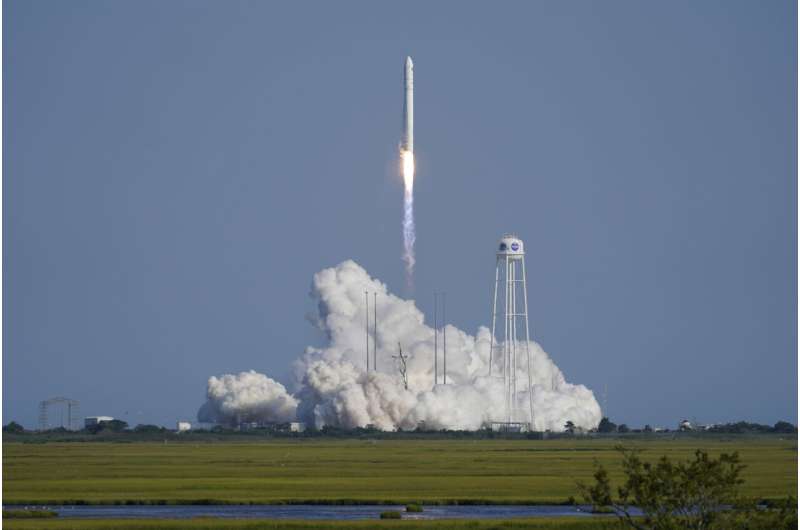
Northrop Grumman's latest space station delivery includes pizza for seven.
The company's Cygnus cargo ship rocketed away from Virginia's eastern shore Tuesday. It should reach the International Space Station on Thursday.
The 8,200-pound (3,700-kilogram) shipment includes fresh apples, tomatoes and kiwi, along with a pizza kit and cheese smorgasbord for the seven station astronauts.

